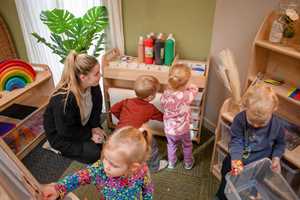
Lesson Ideas and Activities
4 Ways To Foster a Love of Storytelling in your Playground
There is growing evidence to suggest that ‘lockdown’ in the UK has had a negative impact on young children’s language skills. Poor speech development can have long term effects on reading and writing skills.
The Education Endowment Foundation (EEF) research suggests that young children are lacking in social skills and experiences which build a rich vocabulary.
Less interaction and contact with family, social distancing and the wearing of face coverings has left children with limited experiences and fewer opportunities for conversation.
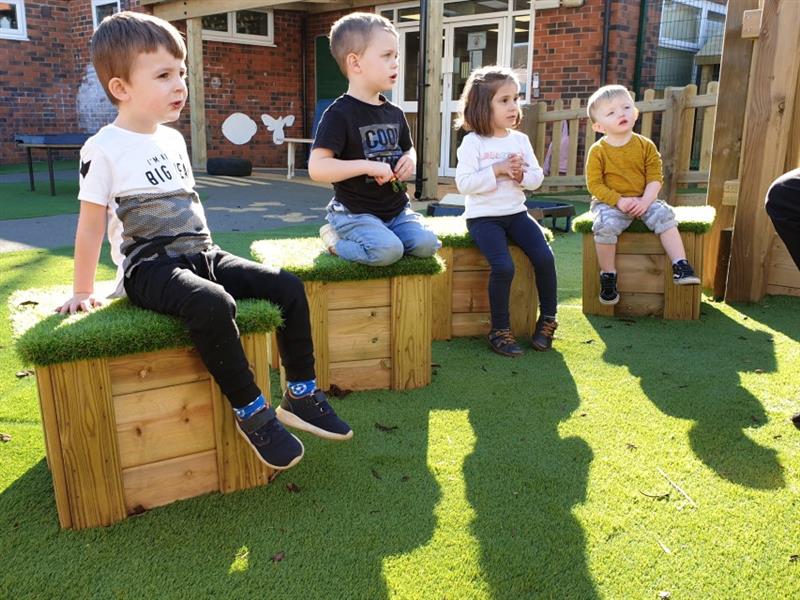
The Magic of Stories
I have witnessed the love children have of stories. The best tales create magic and a sense of wonder at the world. Books are windows, mirrors and doors into children’s own lives and that of others. Storytelling explores different lands, cultures, races and traditions.
It is human nature to tell stories and to share our life events with others. Stories date back to visual cave drawings and Ancient Egyptian hieroglyphic language. Storytelling progressed to oral traditions in which stories were passed down through generations by word of mouth.
Songs, chants and poetry tell stories and myths were passed on, particularly in Native American cultures.
I believe that children should be strongly encouraged to tell their own stories. When children become the storyteller, they are thinking creatively and language skills that may be lacking due to the effects of ‘lockdown’ can be developed.
Telling stories, singing songs and saying rhymes together are great activities for early literacy skills. When children are having fun making up their own stories or sharing family stories together, they are widening their vocabulary and developing language skills.
Product Spotlight
Here are some ideas to foster a love of storytelling in your outdoor setting:
1. Create a Storytelling Circle
Having a storytelling area in your playground is the perfect place for adults to engage all children by telling them a story of their own, it can happen at any time of the day and really helps to improve children’s listening and observation skills.
Sitting in a circle is ideal as children can work on sustaining eye contact, gesture and maintaining attention.
A story circle is a fantastic space for creating a group story. The practitioner may say a phrase or a sentence to start the story and each child contributes.
You can go around the circle a few times and talk about the structure of your story, for example setting the scene, introducing characters, the problem, the solution and the ending.

Open questions can be used such as: What else could that character do? How do we feel about that? Where could they go once they find the key? These types of questions encourage children to freely share their ideas and talk openly.
The use of a story sack when seated in a circle can create excitement, invite curiosity and encourage participation. A story sack could contain commonly found objects such as toys, backdrops, hats, instruments and sensory items.
The teacher could model how to tell a story using the items from the bag and invite children to predict what they think will happen: What will the knight do now? Can you imagine what will happen when they reach the lake?
A Storytelling Chair is really useful when ‘Hot Seating,’ which is a drama technique in which a character or characters played by the teacher or the child are interviewed by the rest of the class.
Children can recount events, explore motivation and develop ideas about stories. ‘Hot Seating’ really allows children to embody the character and discuss different perspectives.
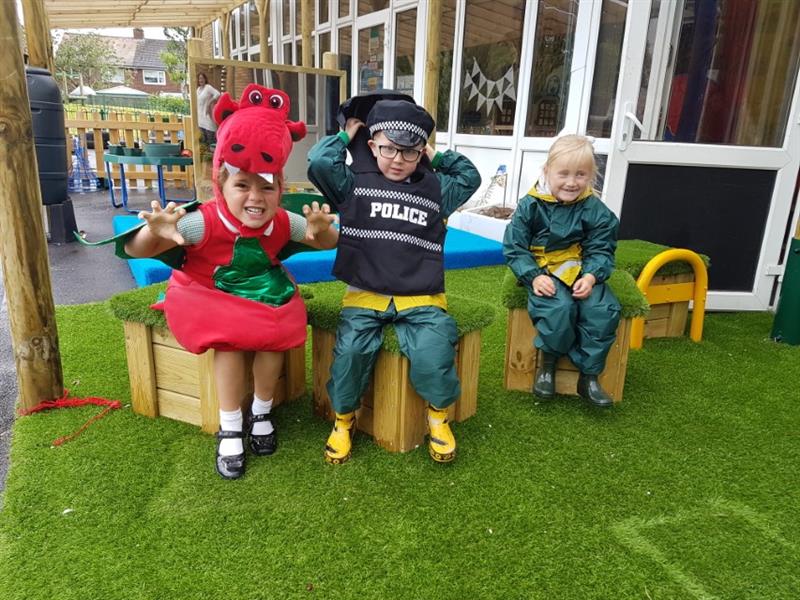
2. Put on a Show!
Shakespeare was regarded as one of the best and most prolific story tellers and to this day his shows are watched by audience’s time and time again. A Performance Stage is a brilliant place to motivate even the most reluctant reader or writer to tell a story.
Performing to an audience, even if it’s only a few friends and not a sell-out crowd can be really beneficial in developing language skills. Children need to be able to clearly pronounce the words of the story so that their friends can hear them.
Suspense can be created by emphasising certain words and using deliberate pauses. For some children having an outdoor space to perform gives them the opportunity to experiment with their voice and to be louder than they normally would be in a classroom environment which can be a great release.

Children love putting on the crown, the cape, the high heels or the football scarf. Using dressing up clothes and props helps children to get into role.
They will begin to use gestures to show key phrases in the story and learn how to interact with the other characters. Having a mirror allows children to practise the emotions of the characters in their facial expressions.
The use of simple shop bought hand puppets or even self-made story spoons encourages children to use their voice to make meaning and show characters emotions to enhance the experience for the audience.
Instruments can become part of stories. A kazoo could represent an insect, the use of a drum could represent a landing, cymbals could be used to highlight a triumph or the snapping of the crocodile’s mouth.
The audience themselves could use shakers and bells to set the scene, perfect for a Christmas sleigh ride adventure. Instruments show a change of tone or mood in the story. They can be used when characters move, arrive or do certain actions.
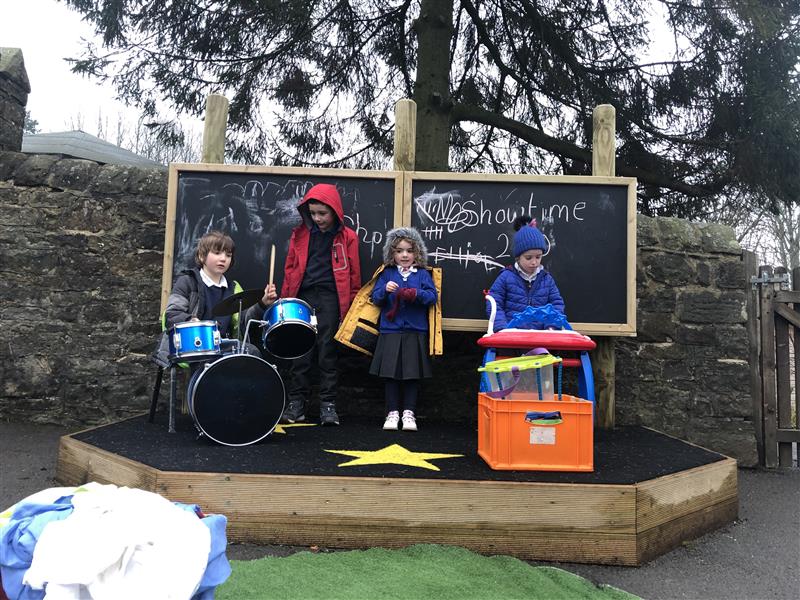
3. Storytelling in Nature
Playing in nature invites children’s imaginations to create stories. For some children holding a pencil, brainstorming ideas and asking them to write does not excite them, but they can certainly tell you a story from their own mind when intrigued and inspired.
Story stones are a great resource that can be left outdoors in the natural environment. The pictures on the stones can help children to re-tell a familiar story or compose one of their own. The pictures are usually a mix of:
- Characters (cat, princess, boy, frog)
- Setting (cave, castle, wood, sea)
- Problem (poisoned apple, fire, sea serpent, wolf, storm)
- Resolution (rainbow, unicorn, key, wand)
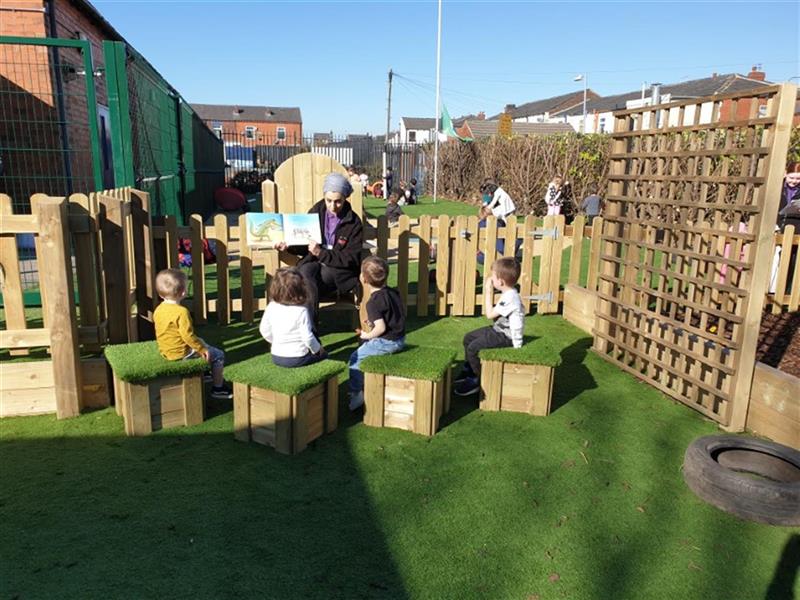
If you paint your stones using blackboard paint, children can practise mark making using chalk and create their own stones. They can be used often to create many different stories.
Abstract stones allow older children to really use their imagination and fill in the gaps. For example, a zigzag line could be a mountain range, a lightning bolt or shark’s teeth.
Making a story stick is a great way to improve speaking and listening. The Aborigines first used ‘message sticks’ to convey information. The sticks were easy to carry and carved or painted with recognisable tribal markings.
Children can search for natural props which they attach to the stick with string as they begin to build their story. As they tell their story they can be using effective nouns, verbs and adjectives to describe colour and actions.
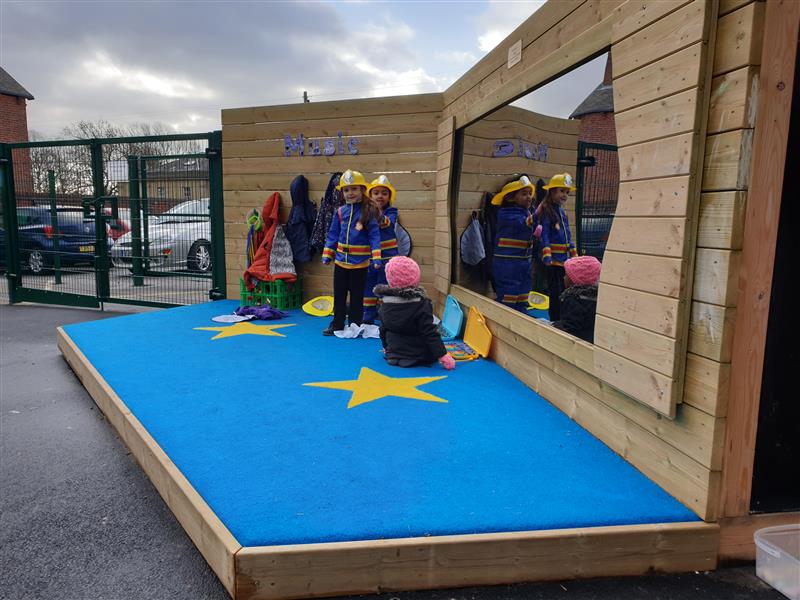
A stimulating, new object in your outside area can often excite children and spark storytelling. A carefully placed fairy door with a sprinkle of glitter will generate many predictions and opinions. A foam egg covered with golden drawing pins could appear in a nest one day which could inspire a full story about a dragon.
Finding a letter in a bottle near the pirate ship would certainly cause children to interact with their peers and develop their vocabulary.
The gingerbread man could be spotted scaling the climbing frame which would prompt children to use story language such as ‘Once upon a time’ but perhaps they will decide upon an alternative ending to their tale.
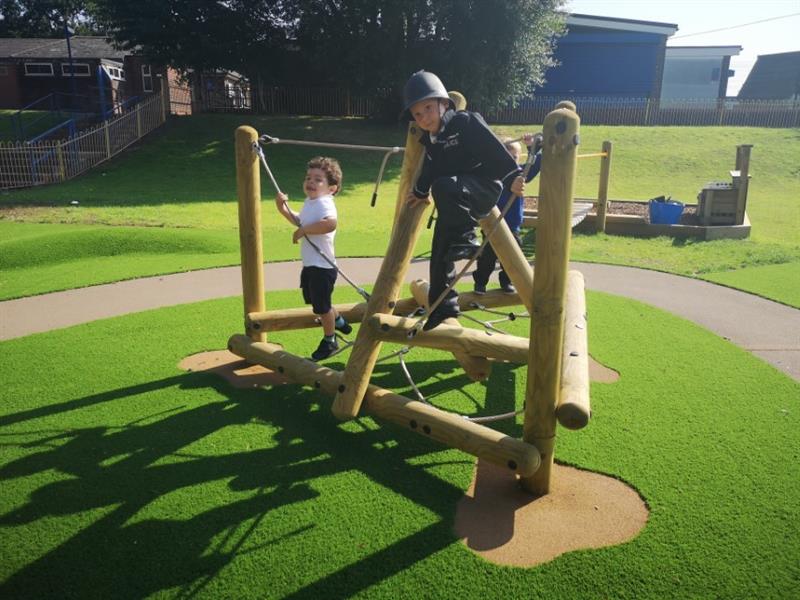
Mud Kitchens provide hours of imaginative play and storytelling. Cooking, preparing dishes and taking orders from customers creates a story that can be told in hundreds of ways. Traditional tales and rhymes can be told using the mud kitchen.
The children could be the three bears mixing their porridge, Little Red Riding Hood baking a cake to take to Granny or perhaps they could be making some hot cross buns or peas pudding. Children will enjoy becoming different characters and may show more confidence outside compared to the constraints of the classroom.
When you observe children using a mud kitchen their language choices are rich. I’ve heard young children use similes such as ‘I’m busy as a bee!’ and ‘We must be quick like lightning.’
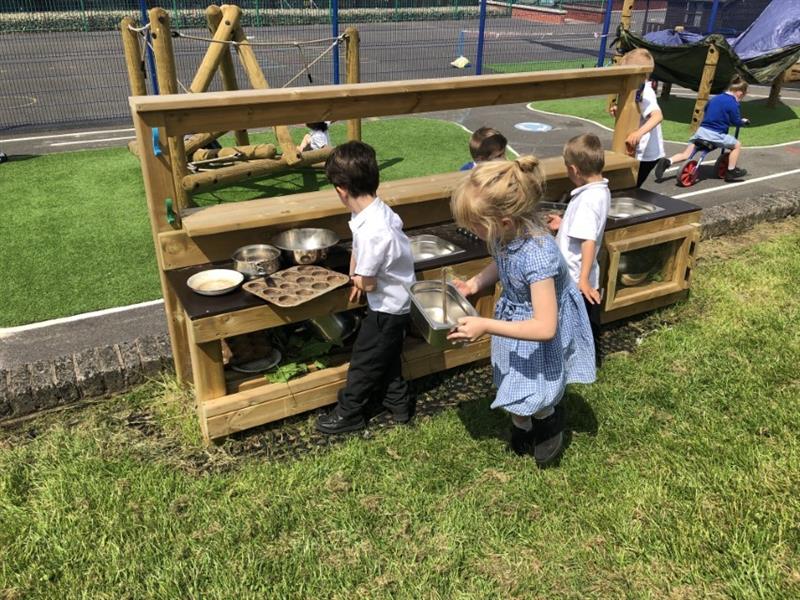
4. A Small World can stimulate an Impressive Story!
Small world play is a fantastic tool for developing early language skills. Your tuff spot table can prompt children to retell their favourite book or create a new, exciting adventure. A dinosaur land can be easily created by collecting large rocks, moss, tree branches, twigs and coloured sand.
Add in your dinosaur figures and you have a tray that will appeal to so many children interests. This type of play encourages group interaction and discussion but equally I love to hear a child deeply immersed in their own world of play and making all the story telling decisions themselves.
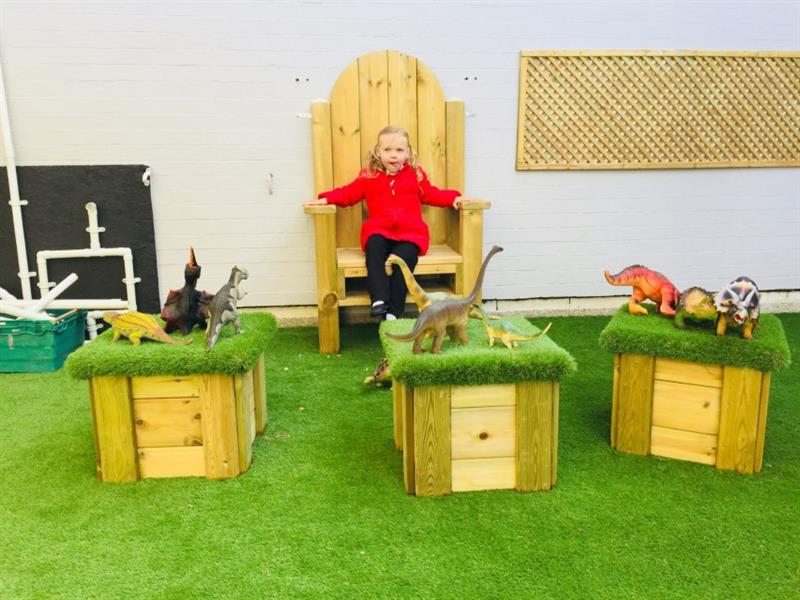
Developing speaking and listening skills is an integral part of our whole National Curriculum in schools. Oral storytelling is an active way of learning which appeals to many learners and can evoke personal and meaningful responses.
Often as teachers, myself included, we tend to focus on reading and writing but if children are to become successful writers, they must be able to orally rehearse their ideas.
I often used this phrase with my classes ‘Think it, Say it, Write it, Read it’ and I feel there should be a real emphasis on the ‘Say it’ to ensure competence in spoken language.
The most memorable teachers from my own childhood and teachers that I have had the pleasure of working with have been super storytellers, often telling stories of their own life and experiences. Children would be gripped; you could hear a pin drop in assembly and you just knew that those stories would stay with those children.
If we are to ignite children’s imaginations, provide them with a rich variety of language, and expect them to respond thoughtfully, Let’s tell them a Story!
If you are looking for storytelling solutions to improve children’s educational experiences in your school or nursery playground, we’re here to help. Please Contact Us for a free, no-obligation consultation with one of our expert playground consultants.
Alternatively, you can provide an immediate storytelling solution in your playground when you purchase our online shop Storytelling Package readily assembled for delivery to your school!
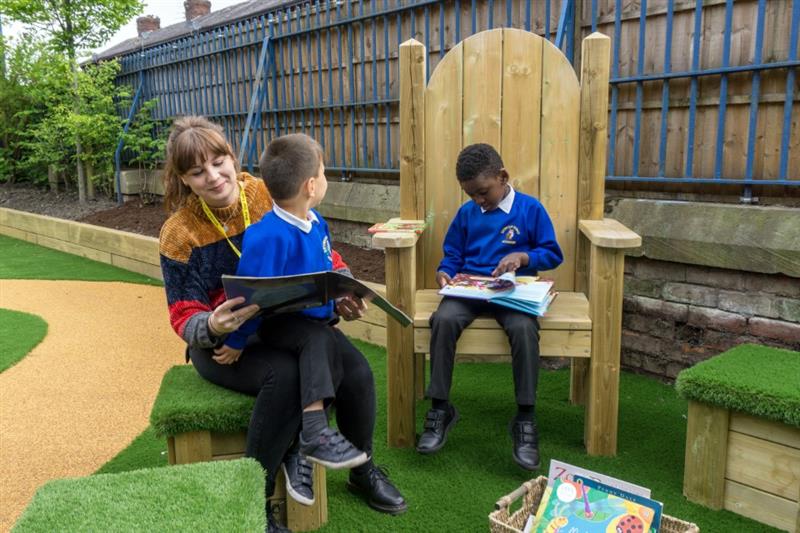




.jpg)
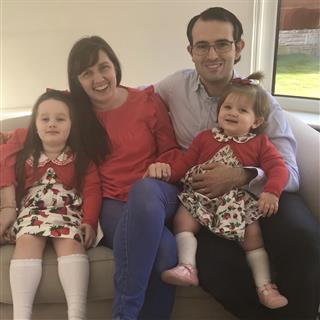
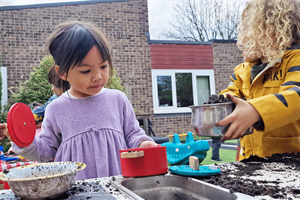
 (Custom).jpg)